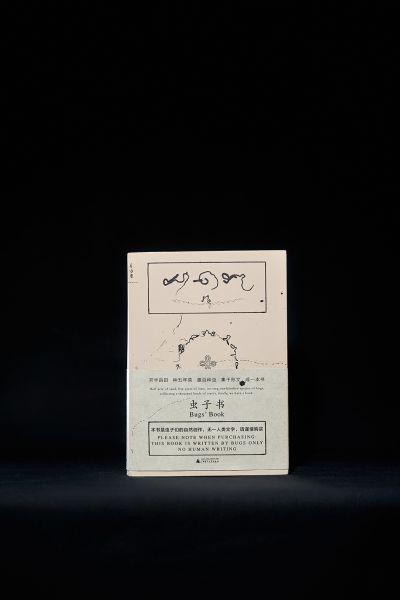Zhu Ying Chun , Huang Fu Shanshan
Bugs‘ Book
- category
- Silver Medal
jury statement
★★★
China
★★★
This work is a forerunner in the field of morphology. It displays all elements of an academic approach: “Half acre of land, five years of time, inviting one hundred species of bugs, collecting a thousand kinds of traces, finally, we have a book.” Morphology is the method, in a dual sense. Firstly biologically: manifold traces of insects, spiders and worms are made visible perhaps for the first time in plausible image processing; they develop huge calligraphical qualities seemingly by themselves. On the other hand linguistically: the aesthetic suggestion of the image results is so powerful that the traces—such as masterful ink drawings, like rubbings from prehistoric rock carvings, like klecksography lost in thought—are recognised as a mysterious, unfamiliar literary language.
Images become text, the ciphers turn into a literal script. As a consequence of the maximum mergence of phenomena and observation, the didactic typography draws on the newly discovered, natural, unique fonts. The so-called imaging processes make a key contribution to understanding in natural sciences. Images with a realistic appearance, which tend to suggest depictive objectivity, are construed from measured values. They hide the fact that these are basically processes that lend meaning. It is precisely this inconsistency that is ingeniously exposed by this search for traces.
At the end, this artistic study succeeds in nothing less than the realisation of a philosophical metaphor: the world as a book that writes itself.
★★★
Dieses fremdsprachige Werk leistet Pionierarbeit auf dem Feld der Morphologie. Es weist alle Merkmale wissenschaftlichen Vorgehens auf: »Half acre of land, five years of time, inviting one hundred species of bugs, collecting a thousand kinds of traces, finally, we have a book.« Morphologie ist die Methode, und zwar in einem doppelten Sinne. Zum einen im Biologischen: Mannigfache Spuren von Kerbtieren, Spinnen und Würmern werden durch plausible Bildbearbeitungen vielleicht zum ersten Male sichtbar gemacht; scheinbar wie von selbst entfalten sie enorme kalligrafische Qualitäten. Zum anderen im linguistischen Sinne: Die ästhetische Suggestion der Bildergebnisse ist so stark, dass die Spuren – wie souveräne Tuschezeichnungen, wie Abriebe prähistorischer Steinritzungen, wie selbstvergessene Klecksografien – als mysteriöse, fremdartige Schriftsprache erkannt werden.
Bilder werden zum Text, die Chiffren zu buchstäblicher Schrift. Als Konsequenz der maximalen Verschmelzung von Phänomen und Beobachtung bedient sich die didaktische Typografie der neu entdeckten, natürlichen, einzigartigen Schrifttype. Zum Verständnis in den Naturwissenschaften tragen wesentlich die sogenannten bildgebenden Verfahren bei. Aus Messergebnissen werden realistisch wirkende Bilder konstruiert, die eine abbildende Objektivität eher suggerieren. Sie täuschen darüber hinweg, dass es sich im Grunde um bedeutungsgebende Verfahren handelt. Genau diese Widersprüchlichkeit wird durch die vorliegende Spurensuche geradezu genial entlarvt.
Am Ende gelingt der künstlerischen Studie nichts Geringeres als die Verwirklichung einer philosophischen Metapher: Die Welt als ein sich selbst schreibendes Buch.

